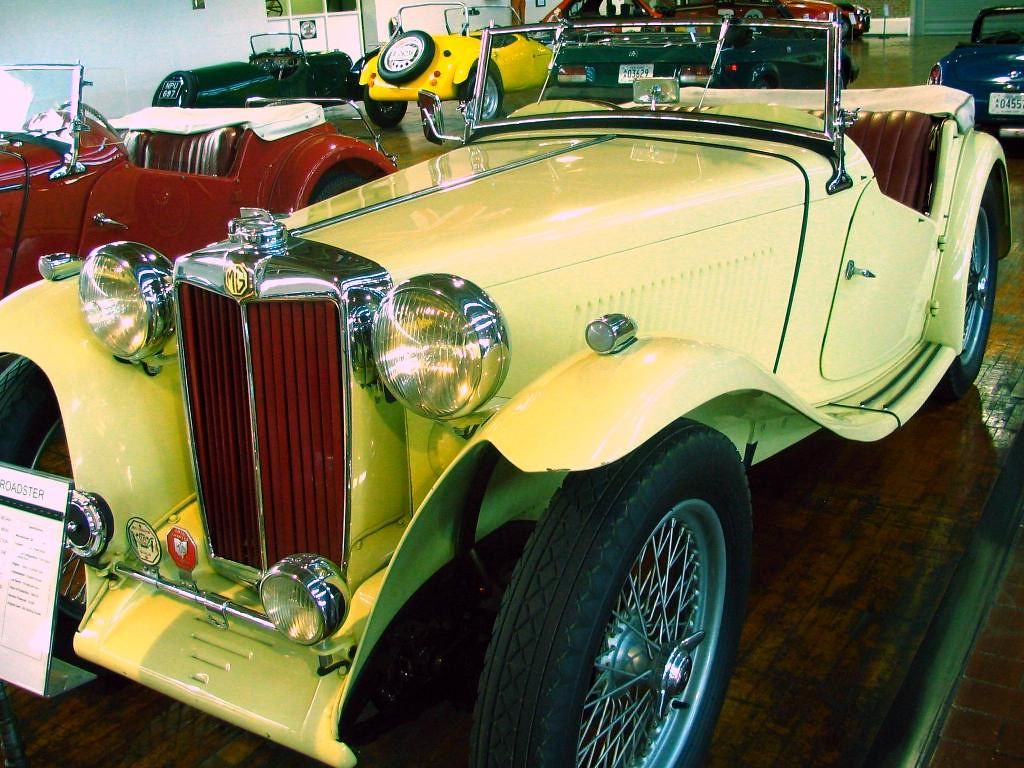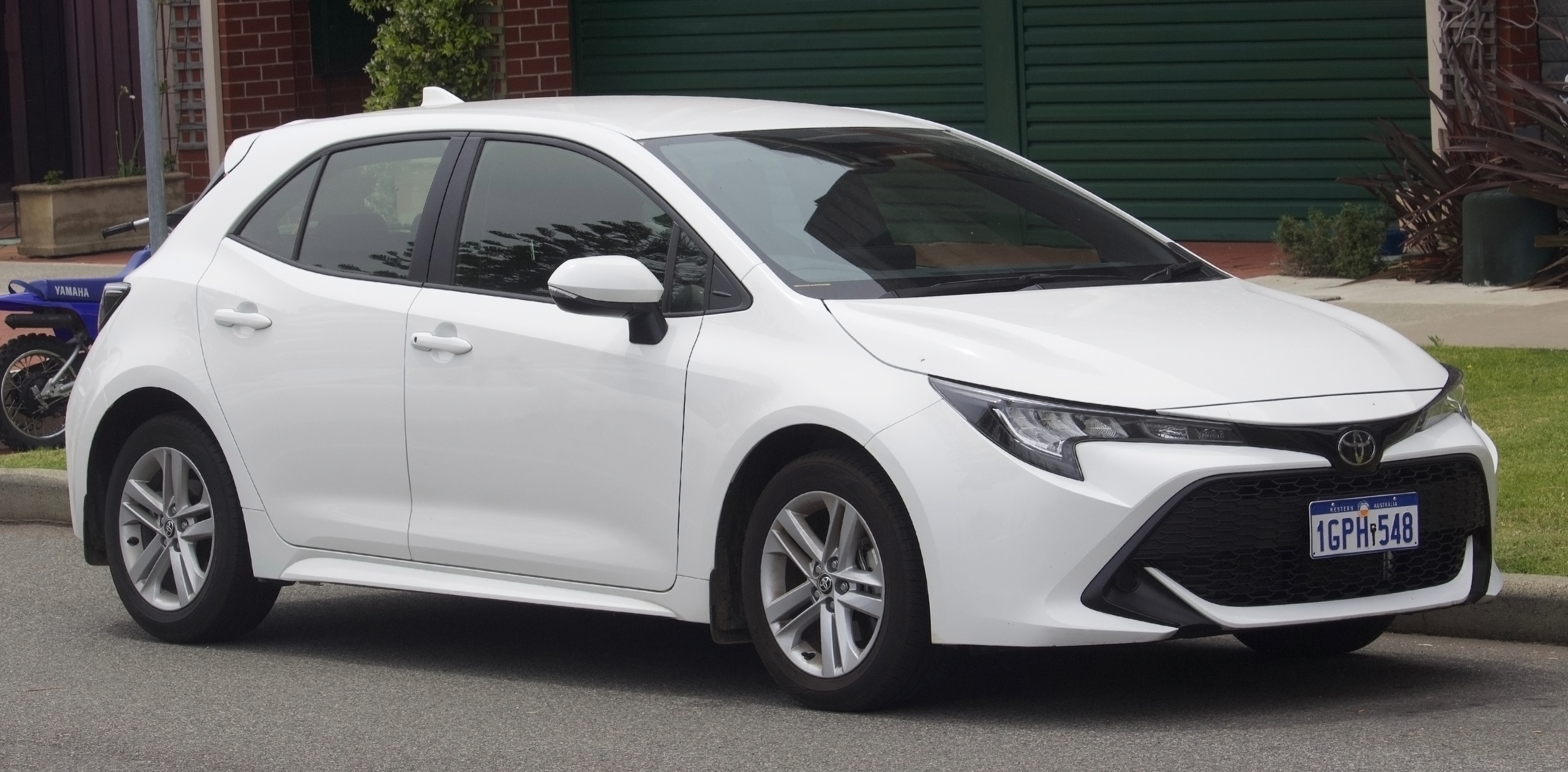
Owning a car in 2025 is an increasingly significant financial commitment, extending far beyond the initial sticker price. Recent reports from sources like Kelley Blue Book indicate that the purchase price for new vehicles has surged by approximately 25% since early 2020. However, this upfront cost is merely the tip of the iceberg when considering the true financial footprint of vehicle ownership. A September report from AAA revealed that the average cost to own and operate a new vehicle in 2024 hovered just over $1,000 per month, a notable increase of $115 from the previous year. This figure encompasses a spectrum of expenses, including fuel, maintenance, depreciation, and finance charges, painting a comprehensive picture of what consumers truly pay.
Indeed, the total cost of vehicle ownership has been on a “steadily increasing over the years” trajectory, a trend exacerbated by supply chain disruptions that emerged during the COVID-19 era. Greg Brannon, AAA’s director of automotive research, noted that “COVID and some of the supply shortages during that time really changed many of the dynamics in the car market,” adding, “We’re still seeing the impact.” This upward pressure on costs makes it more critical than ever for consumers to consider all financial aspects, not just the purchase price, when shopping for a new car. Focusing on factors like maintenance, fuel efficiency, insurance, and depreciation can lead to substantial long-term savings.
For many car owners, maintenance costs represent a significant, often unpredictable, drain on their wallets. The average cost of car repairs and maintenance is around $1,475 per year, a figure that is projected to rise further in 2025. This hidden cost underscores the importance of choosing a vehicle known for its reliability and affordable upkeep. In this in-depth guide, we delve into specific 2025 car models that stand out for their exceptionally low maintenance costs, drawing on expert analyses from CarEdge and other financial technology companies. Our aim is to equip you with the knowledge to make an informed decision, ensuring your next vehicle doesn’t just meet your needs but also supports your financial well-being by keeping repair bills at bay.
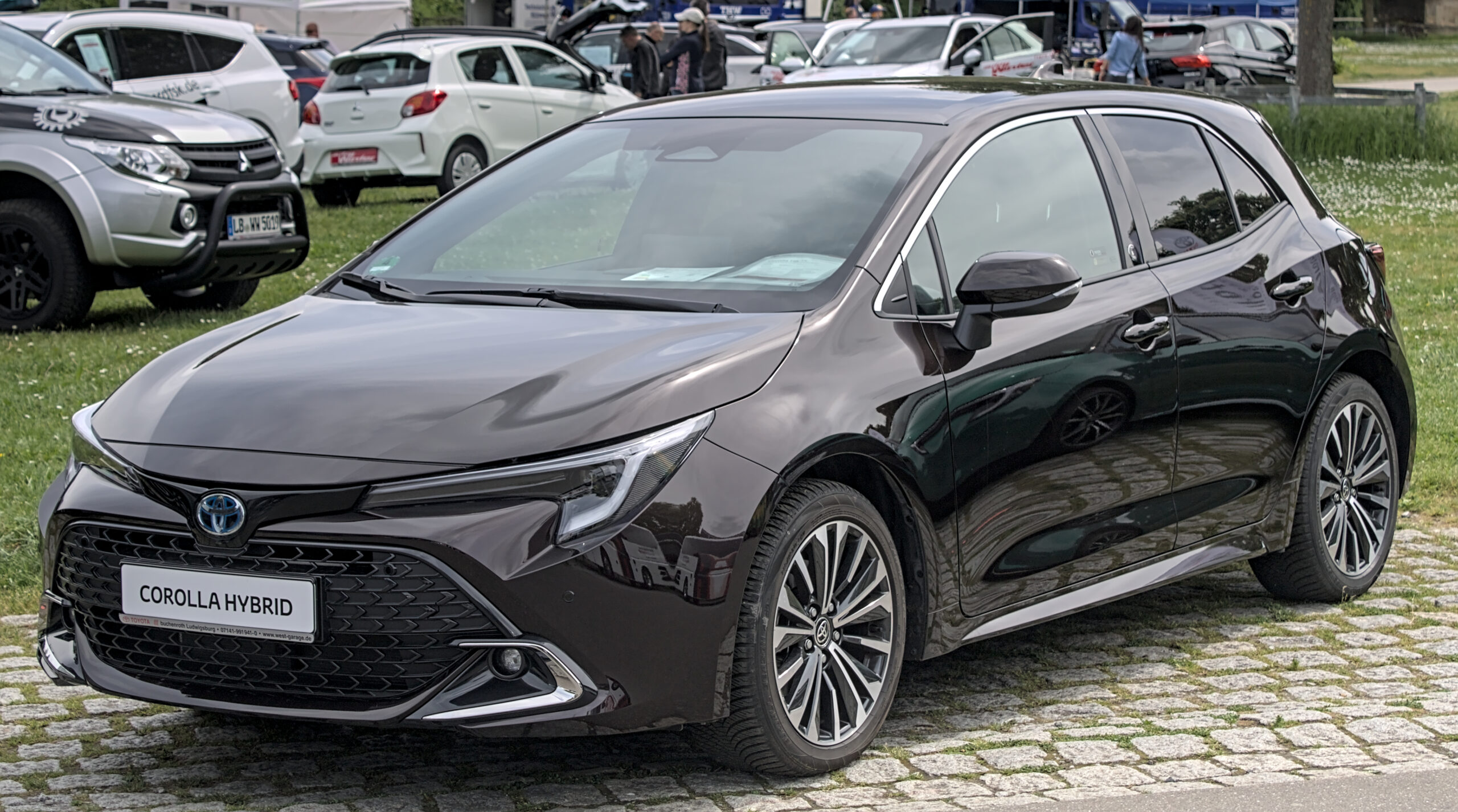
1. **Toyota Corolla Hatchback**
Topping the list of vehicles with the cheapest maintenance costs, the Toyota Corolla Hatchback boasts an estimated 10-year maintenance cost of just $4,145. This impressive figure immediately positions it as a frontrunner for consumers prioritizing long-term affordability. The Corolla’s reputation for reliability is well-established, making it a perennial favorite among city drivers and commuters who value dependable transportation without the worry of frequent, costly repairs. Its design, engineering, and the readily available, often standardized, nature of its replacement parts contribute significantly to this low maintenance burden.
Beyond just maintenance, the Corolla Hatchback also shines in broader cost-of-ownership metrics. CarEdge Research identifies it as one of the ten cars with the lowest five-year cost to own, with a predicted total cost of ownership of $29,686, including a starting MSRP of $24,915 with destination fees. A significant contributor to its overall affordability is its exceptional depreciation performance. The Corolla is known for seeing the least depreciation of any new car on sale today, with a predicted five-year depreciation of only $5,164. This means the vehicle retains its value remarkably well, providing greater financial stability for owners over time.
The combination of minimal maintenance costs, excellent fuel economy, and superior resale value makes the Toyota Corolla Hatchback an undeniably smart choice for budget-conscious buyers. Its consistent performance and straightforward engineering reduce the likelihood of unexpected mechanical issues, directly translating into fewer trips to the service center and lower out-of-pocket expenses. This model exemplifies how a focus on foundational reliability can deliver substantial savings throughout a vehicle’s lifespan, proving that a lower sticker price isn’t the only pathway to affordable car ownership.
Car Model Information: 2023 Volvo XC60 B5 Ultimate Bright Theme
Name: Toyota Corolla
Caption: Twelfth generation model (2020, hatchback)
Manufacturer: Toyota
Aka: unbulleted list
Production: November 1966 – present
Class: unbulleted list
Predecessor: Toyota Publica
Categories: 1970s cars, 1980s cars, 1990s cars, 2000s cars, 2010s cars
Summary: The Toyota Corolla (Japanese: トヨタ・カローラ, Hepburn: Toyota Karōra) is a series of compact cars (formerly subcompact) manufactured and marketed globally by the Japanese automaker Toyota Motor Corporation. Introduced in 1966, the Corolla has been the world’s best-selling automobile of all time since 1997, when it surpassed the Volkswagen Beetle. Toyota reached the milestone of 50 million Corollas sold over twelve generations in 2021.
The name Corolla is part of Toyota’s naming tradition of using names derived from the Toyota Crown for sedans, with “corolla” Latin for “small crown”. The Corolla has always been exclusive in Japan to Toyota Corolla Store locations, and manufactured in Japan with a twin, called the Toyota Sprinter until 2000. From 2006 to 2018 in Japan and much of the world, and from 2018 to 2020 in Taiwan, the hatchback companion had been called the Toyota Auris.
Early models were mostly rear-wheel drive, while later models have been front-wheel drive. Four-wheel drive versions have also been produced, and it has undergone several major redesigns. The Corolla’s traditional competitors have been the Nissan Sunny, introduced the same year as the Corolla in Japan and the later Nissan Sentra, Subaru Leone, Honda Civic and Mitsubishi Lancer. The Corolla’s chassis designation code is “E”, as described in Toyota’s chassis and engine codes.
Get more information about: Toyota Corolla
Buying a high-performing used car >>>
Brand: Toyota Model: Corolla Hatchback
Price: $33,595 Mileage: 57,695 mi.
Read more about: The Ultimate 2025 SUV Fuel Economy Showdown: How Top Models Perform on Long-Distance Journeys
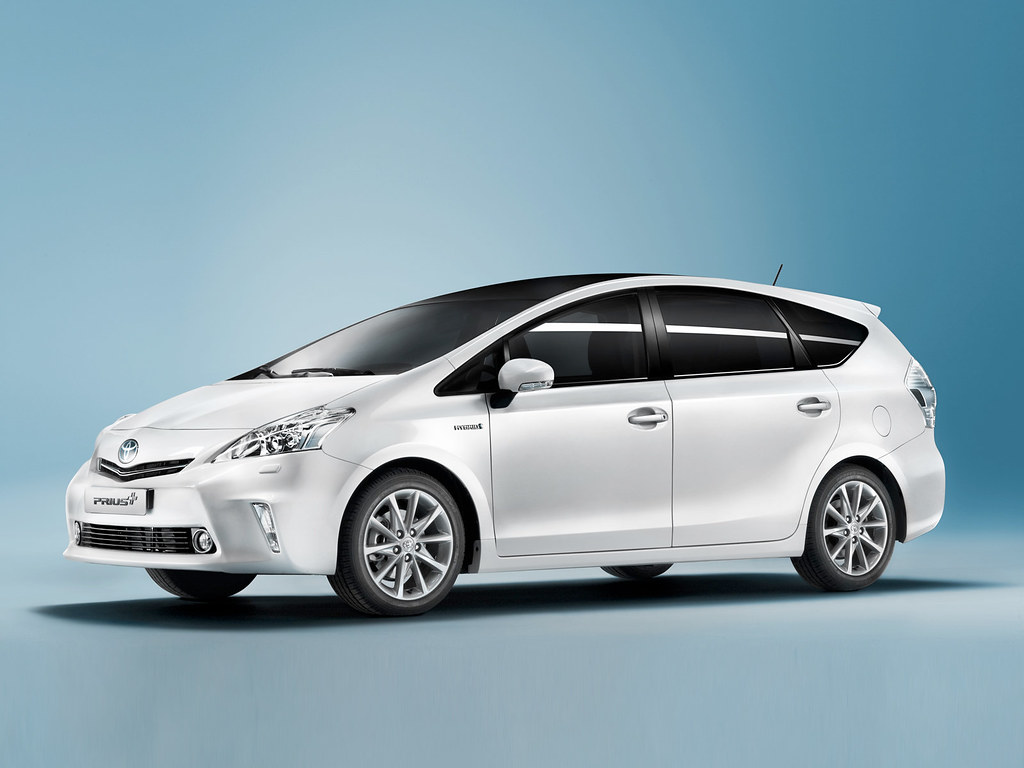
2. **Toyota Prius**
Following closely behind its Corolla sibling, the Toyota Prius is another standout in terms of low maintenance, with an estimated 10-year maintenance cost of $4,231. This hybrid pioneer has long been synonymous with fuel efficiency, but its enduring reliability and reduced maintenance needs are equally compelling for consumers. The Prius’s hybrid powertrain, while technologically advanced, is engineered for durability and consistent performance, often leading to less wear and tear on components compared to conventional gasoline-powered vehicles, especially in stop-and-go driving conditions.
Greg Brannon of AAA has pointed out that hybrids, in general, tend to have some of the lowest ownership costs, according to AAA data. This insight is perfectly encapsulated by the Prius, whose design optimizes not just fuel consumption but also the longevity of its critical systems. Toyota as a brand benefits from a strong perception of reliability among consumers, which is supported by data and contributes to lower depreciation rates across its lineup. The Prius, being a cornerstone of Toyota’s efficient vehicle offerings, naturally inherits and upholds this reputation, reinforcing its position as a cost-effective choice.
Furthermore, the standardized nature of many Toyota parts and the widespread expertise in servicing these vehicles mean that even when maintenance is required, it is often more affordable and quicker to address. The car’s practical design and well-thought-out engineering minimize complex repair scenarios, translating into lower labor costs if a professional mechanic is needed. For those seeking an environmentally conscious vehicle that also excels in financial prudence, the Toyota Prius continues to be an exemplary option, offering peace of mind both at the pump and in the repair shop.
Car Model Information: 2025 Toyota Prius L
Name: Toyota Prius
Caption: Fifth generation Prius (XW60)
Manufacturer: Toyota
Production: December 1997 – present
ModelYears: 2001–present (US)
Class: ubl
BodyStyle: unbulleted list
Layout: unbulleted list
Sp: uk
Categories: 2000s cars, 2010s cars, 2020s cars, All-wheel-drive vehicles, All Wikipedia articles in need of updating
Summary: The Toyota Prius ( PREE-əss) (Japanese: トヨタ・プリウス, Hepburn: Toyota Puriusu) is a car produced by Toyota since 1997 over five generations. The Prius has a hybrid drivetrain, which combines an internal combustion engine and an electric motor. Initially offered as a subcompact four-door saloon, it has been produced only as a compact five-door liftback since 2003.
The Prius was developed by Toyota to be the “car for the 21st century”; it was the first mass-produced hybrid vehicle, first going on sale in Japan in 1997 at all four Toyota Japan dealership chains, and subsequently introduced worldwide in 2000.
In 2011, Toyota expanded the Prius family to include the Prius v, an MPV, and the Prius c, a subcompact hatchback. The production version of the Prius plug-in hybrid was released in 2012. The second generation of the plug-in variant, the Prius Prime, was released in the U.S. in November 2016. The Prius family totaled global cumulative sales of 6.1 million units in January 2017, representing 61% of the 10 million hybrids sold worldwide by Toyota since 1997. Toyota sells the Prius in over 90 markets, with Japan and the United States being its largest markets.
Get more information about: Toyota Prius
Buying a high-performing used car >>>
Brand: Toyota Model: Prius
Price: $32,983 Mileage: 4,291 mi.
Read more about: Optimizing Urban Journeys: A Comprehensive Guide to Compact Cars for Commuters Over 60

3. **Honda Civic Hatchback**
The Honda Civic Hatchback emerges as a strong contender for lowest maintenance costs, with a projected 10-year maintenance estimate of $5,412. The Civic, in its various forms, consistently appears on lists highlighting both low maintenance and overall low ownership costs, underscoring its broad appeal as a value-driven vehicle. Its presence on CarEdge’s general list of least expensive cars to maintain, Self Financial’s analysis of lowest ownership costs, and CarEdge Research’s list of lowest five-year total cost to own, solidifies its reputation as a financially astute choice for consumers.
Renowned as one of the most well-rounded compact cars available, the Honda Civic Hatchback offers an impressive blend of characteristics that contribute to its affordability. It delivers excellent fuel economy, boasts top-tier safety ratings, and, crucially, carries a sterling reputation for long-term reliability. These attributes directly translate into fewer unexpected breakdowns and reduced repair expenses over the vehicle’s lifespan. Honda, like Toyota, is frequently cited by Brannon of AAA as a brand with “pretty good depreciation rates” due to consumers’ perception and supporting data of their reliability, further enhancing the Civic’s overall value proposition.
For a predicted 5-year total cost of ownership of $33,356, with a starting MSRP of $25,400 and a predicted 5-year depreciation of $8,572, the Civic Hatchback presents a compelling case. Its engineering often emphasizes accessibility for routine maintenance, potentially leading to lower labor costs when servicing is required. The availability of common, standardized replacement parts also ensures that repairs, if needed, are both quicker and more affordable. The Honda Civic Hatchback is a testament to the idea that drivers do not need to sacrifice quality or driving enjoyment to achieve significant savings on vehicle maintenance.
Car Model Information: 2023 Volvo XC60 B5 Ultimate Bright Theme
Caption: 2024 Honda Civic liftback
Manufacturer: Honda
Aka: ubl
Production: 1972–present
Class: Subcompact car
BodyStyle: fastback,Sedan (automobile)
Layout: Front-engine, front-wheel-drive layout,Front-engine, four-wheel-drive layout
Predecessor: Honda N600,Honda Z600
Categories: 1980s cars, 1990s cars, 2000s cars, 2010s cars, 2020s cars
Summary: The Honda Civic (Japanese: ホンダ・シビック, Hepburn: Honda Shibikku) is a series of automobiles manufactured by Honda since 1972. As of 2023, the Civic is positioned between the Honda Fit/City and Honda Accord in Honda’s global passenger car line-up. It is one of the best-selling automobiles in history, with over 27 million units sold through 2021.
The first-generation Civic was introduced in July 1972 as a two-door fastback sedan, followed by a three-door hatchback that September. With a 1,169 cc transverse engine and front-wheel drive, the car provided good interior space despite its small overall dimensions. Initially gaining a reputation for being fuel-efficient, reliable and environmentally friendly, later iterations have become known for performance and sportiness, especially the Civic Si, SiR, and Type R versions. It is currently in its eleventh generation, which has been produced since 2021.
The Civic has often been rebadged for international markets, and it served as the basis for the Honda CR-X, the Honda CR-X del Sol, the Concerto, the first generation Prelude, the Civic Shuttle (which later became the Orthia) and the CR-V (which in turn was used as the basis for the Honda FR-V).
Get more information about: Honda Civic
Buying a high-performing used car >>>
Brand: Honda Model: Civic Hatchback
Price: $33,595 Mileage: 57,695 mi.
Read more about: The Ultimate 2025 SUV Fuel Economy Showdown: How Top Models Perform on Long-Distance Journeys
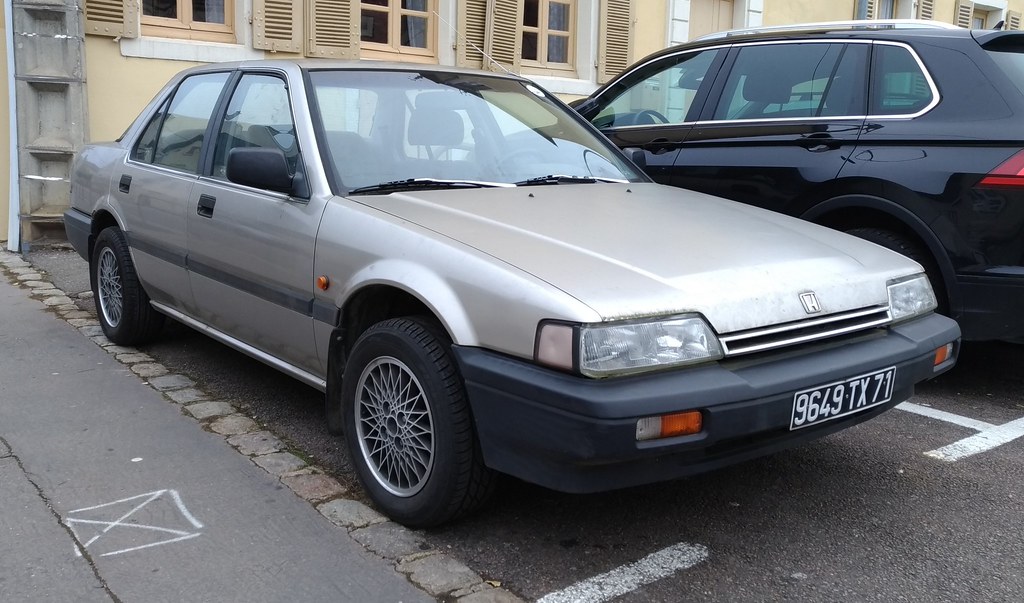
4. **Honda Accord**
The Honda Accord secures its position among the vehicles with the cheapest maintenance costs, with an estimated 10-year maintenance cost of $5,748. This figure places it as another highly reliable and economically sensible option within the Honda lineup. The Accord, much like its smaller sibling the Civic, benefits from Honda’s long-standing commitment to quality and durability, making it a predictable and affordable vehicle to maintain over the long haul. Its inclusion on CarEdge’s broader list of least expensive cars to maintain further reinforces its status as a cost-effective choice for discerning buyers.
Zach Shefska, founder and CEO of CarEdge, has observed that “Reliable, mass-market brands often deliver more predictable and affordable upkeep.” The Honda Accord perfectly embodies this statement, standing as a prime example of a vehicle that consistently provides dependable performance without incurring exorbitant repair bills. Its engineering prioritizes robust components and accessible design, which translates directly into reduced labor times for mechanics and lower costs for vehicle owners. This focus on practical maintenance considerations is a hallmark of Honda’s approach to vehicle development.
Moreover, the Accord’s established presence in the market means that parts are widely available and mechanics are generally familiar with its systems, simplifying any necessary repairs. This widespread familiarity and parts accessibility contribute significantly to keeping maintenance costs down. For consumers seeking a mid-size sedan that combines spaciousness, comfort, and advanced features with the undeniable advantage of low long-term running costs, the Honda Accord presents an exceptionally strong argument. Its proven track record for reliability makes it a wise investment for anyone looking to mitigate the hidden expenses of car ownership.”
Continuing our exploration into vehicles that promise long-term financial relief, we delve into more models that stand out for their exceptionally low maintenance costs. These selections not only underscore strategic engineering but also offer compelling value propositions for the discerning car buyer. Understanding these vehicles and the broader factors influencing ownership costs is paramount in making an informed decision in today’s dynamic automotive market.
Car Model Information: 2015 Honda Accord Sport
Name: Honda Accord
Caption: 2023 Honda Accord LX (US)
Alt: Front three-quarter view of a front-engined four-door car.
Manufacturer: Honda
Production: 1976–present
Class: Compact car
BodyStyle: hatchback
Layout: Front-engine, front-wheel-drive layout
Predecessor: Honda 1300
Categories: 1980s cars, 1990s cars, 2000s cars, 2010s cars, 2020s cars
Summary: The Honda Accord (Japanese: ホンダ・アコード, Hepburn: Honda Akōdo; ), also known as the Honda Inspire (Japanese: ホンダ・インスパイア, Hepburn: Honda Insupaia) in Japan and China for certain generations, is a series of automobiles manufactured by Honda since 1976, best known for its four-door sedan variant, which has been one of the best-selling cars in the United States since 1989. The Accord nameplate has been applied to a variety of vehicles worldwide, including coupes, station wagons, hatchbacks and a Honda Crosstour crossover.
Get more information about: Honda Accord
Buying a high-performing used car >>>
Brand: Honda Model: Accord
Price: $17,961 Mileage: 58,521 mi.
Read more about: The Electrifying Pace: Unpacking How 2025 is Transforming EV Charging Speeds and Access Across Global Regions
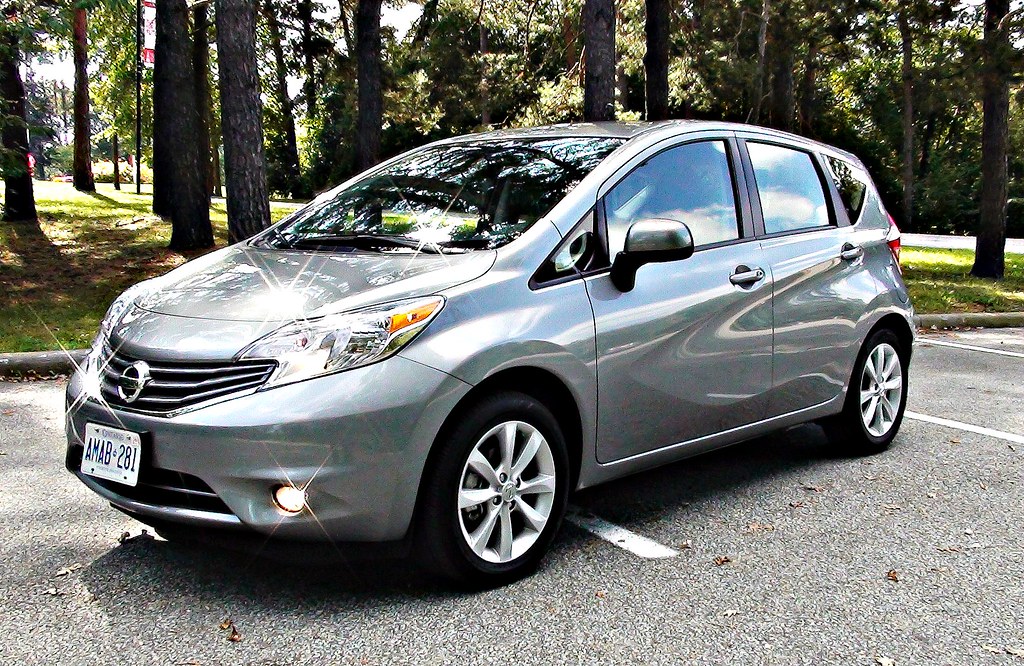
5. **Nissan Versa**
The Nissan Versa distinguishes itself with an estimated 10-year maintenance cost of $5,688, making it a compelling entry on our list of financially savvy choices. Widely recognized for its fuel efficiency, comprehensive safety features, and compact dimensions, the Versa has carved out a niche for itself as a dependable vehicle that prioritizes practicality and low running costs. Its straightforward design is a key contributor to its appeal.
This model’s inherent dependability means owners are less likely to encounter unexpected breakdowns or significant mechanical issues, directly translating into fewer repair shop visits and lower out-of-pocket expenses. Should repairs become necessary, the Versa’s simple engineering and readily available, affordable replacement parts significantly reduce the overall cost burden. This accessibility of components and ease of service are crucial factors in its low maintenance profile.
Indeed, the Nissan Versa has earned a reputation as America’s cheapest new car for a period, a testament to its commitment to affordability across its lifespan. Although Nissan has announced its discontinuation after the 2025 model year, the Versa continues to offer one of the lowest total costs of ownership among new vehicles on sale, providing a compelling option for those seeking immediate and long-term savings.
CarEdge Research further reinforces the Versa’s value, predicting a 5-year total cost of ownership of $35,337, including a starting MSRP of $18,337 with destination fees. Its predicted 5-year depreciation stands at an impressive –$9,562, indicating strong value retention for a vehicle in its segment. These figures collectively highlight why the Versa remains a smart choice for budget-conscious consumers.
Car Model Information: 2021 Nissan Versa 1.6 SV
Categories: All set index articles, Articles with short description, CS1 Mexican Spanish-language sources (es-mx), CS1 Portuguese-language sources (pt), CS1 Spanish-language sources (es)
Summary: Nissan Versa is an automobile nameplate used by the Japanese manufacturer Nissan in the Americas for the following models:
According to a Nissan press release in 2008, “versa” is short for “versatile space” meant to imply the spaciousness of the interior and configurable cargo arrangements.
Get more information about: Nissan Versa
Buying a high-performing used car >>>
Brand: Nissan Model: Versa
Price: $12,600 Mileage: 96,776 mi.
Read more about: The Ultimate 2025 SUV Fuel Economy Showdown: How Top Models Perform on Long-Distance Journeys
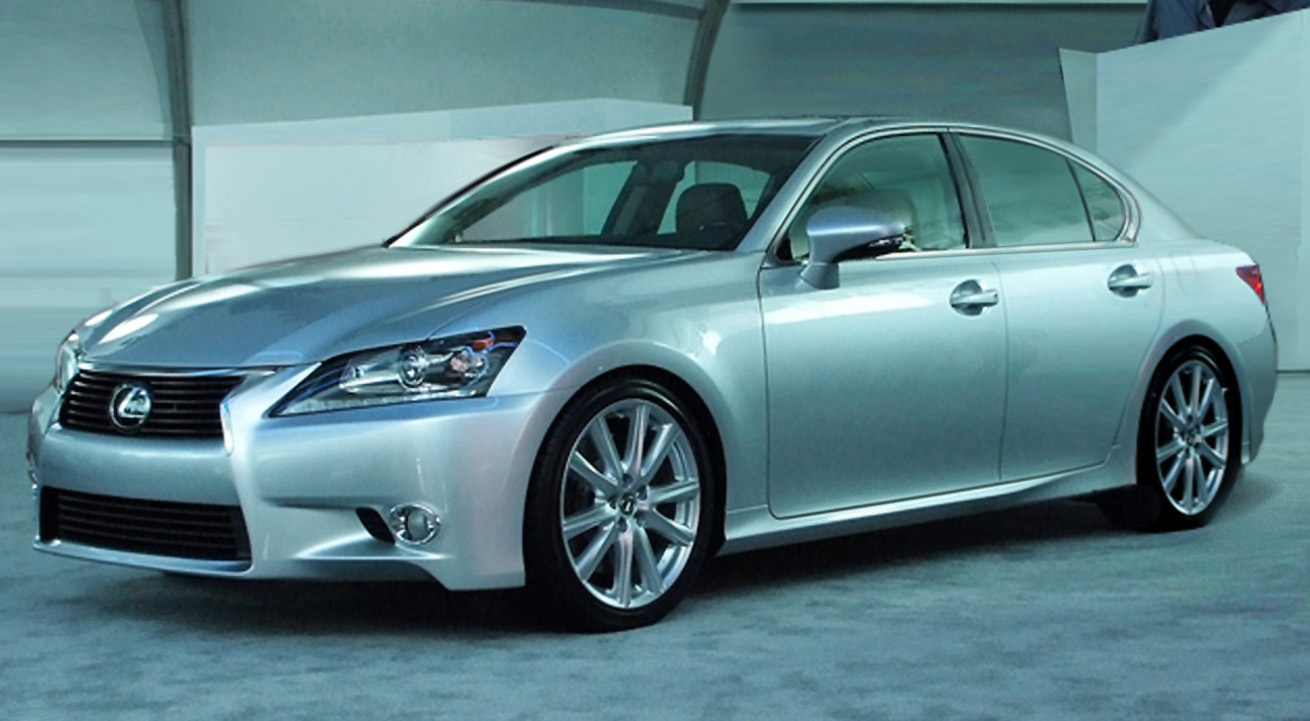
6. **Lexus ES 350**
Defying the common perception that luxury vehicles inherently entail exorbitant maintenance costs, the Lexus ES 350 emerges with an estimated 10-year maintenance cost of $5,829. This impressive figure places it firmly among the most affordable vehicles to maintain, even while offering a premium experience. It demonstrates that a sophisticated ride does not necessarily equate to burdensome upkeep.
Lexus, as Toyota’s luxury division, benefits from a foundational commitment to reliability and quality engineering that is evident across its entire lineup. The ES 350, in particular, showcases this ethos, incorporating durable components and well-proven systems that contribute to its consistent performance and reduced need for frequent, costly repairs. This strategic design minimizes unexpected service needs.
While the overall cost of ownership for a luxury brand like Lexus might be higher than a mass-market compact due to factors such as initial purchase price, insurance premiums, and depreciation, the ES 350’s specific maintenance costs remain remarkably competitive. This makes it an attractive proposition for consumers who desire the comfort, refinement, and advanced features of a luxury sedan without the typical long-term financial anxieties associated with high-end vehicle maintenance. The ES 350 offers a balanced approach, delivering prestige with practical affordability.
Car Model Information: 2019 Land Rover Range Rover Sport HSE
Name: Lexus ES
Caption: Lexus ES 350 (GSZ10)
Manufacturer: Toyota
Aka: unbulleted list
Production: June 1989 – present
Class: unbulleted list
BodyStyle: unbulleted list
Layout: unbulleted list
ModelYears: 1990–present
Categories: 1990s cars, 2000s cars, 2010s cars, 2020s cars, All-wheel-drive vehicles
Summary: The Lexus ES is a mid-size luxury sedan marketed since 1989 by Lexus, the luxury division of Toyota, across multiple generations, each offering V6 engines and a front-engine, front-wheel-drive layout. The first five generations of the ES used the Toyota Camry platform, while the latter generations are more closely related to both the Camry and the Avalon. Manual transmissions were offered until 1993, a lower-displacement inline-four engine became an option in Asian markets in 2010, and a gasoline-electric hybrid version was introduced in 2012. The ES was Lexus’s only front-wheel drive vehicle until 1998, when the related RX was introduced, and the sedan occupied the entry-level luxury car segment of the Lexus lineup in North America and other regions until the debut of the IS in 1999. The ES name stands for “Executive Sedan”. However, some Lexus importers use the name, “Elegant Sedan”.
Introduced in 1989, the first generation ES 250 was one of two vehicles in Lexus’s debut range, along with the LS 400. The second generation ES 300 debuted in 1991, followed by the third generation ES 300 in 1996, and the fourth generation ES 300/330 in 2001. The first- through fourth generation sedans shared body styling elements with Japan-market Toyota sedans, and a domestic market equivalent, the Toyota Windom (Japanese: トヨタ・ウィンダム, Toyota Windamu), was sold until the launch of the fifth generation ES in 2006. The word “Windom” is a combination of “win” and the suffix “dom” expresses a state of perpetual victory. The fifth generation ES used body styling marketed by Lexus as L-finesse and debuted in early 2006 as a 2007 model. The sixth generation ES debuted in the first half of 2012 as a 2013 model, and features increased cabin dimensions due to a longer wheelbase which is shared with the full-size XX40 series Avalon.
Lexus has positioned the ES in the comfort luxury segment, with an emphasis on interior amenities, quietness, and ride quality, in contrast with more firm-riding sport sedans. Buyers seeking more performance-focused models are targeted by the Lexus IS and rival makes, with such models offering a sportier drive with differently tuned suspensions. In Europe, Japan and other markets where it was not available until the seventh generation model, the GS sport sedans occupy the mid-size category in the Lexus lineup until it was cancelled August 2020. In the United States, the ES has been the best-selling Lexus sedan for over fifteen years.
Get more information about: Lexus ES
Buying a high-performing used car >>>
Brand: Lexus Model: ES 350
Price: $27,489 Mileage: 77,935 mi.
Read more about: Navigating the 2025 Convertible Market: Top Models That Retain Their Value Best Over Time
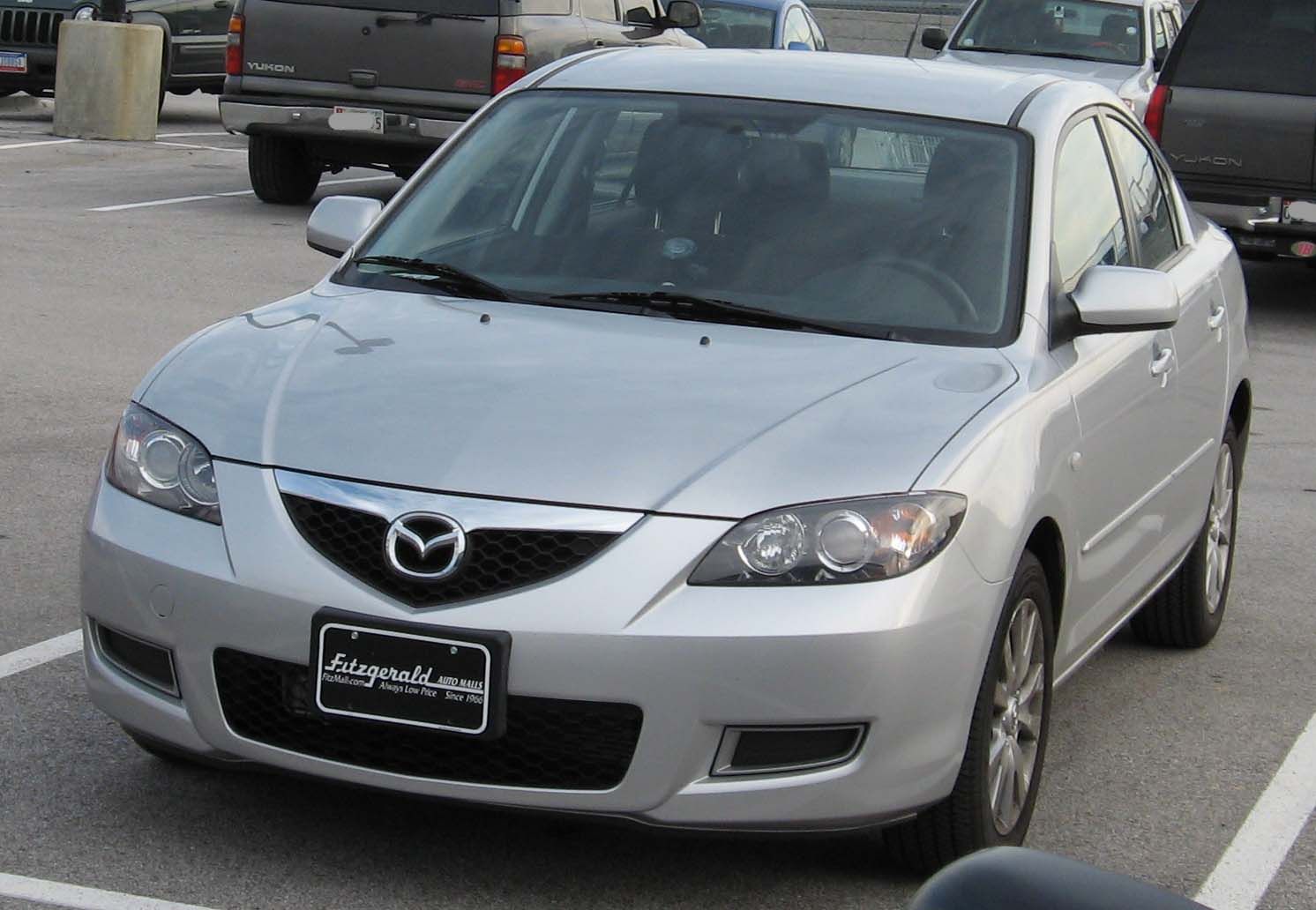
7. **Mazda Mazda3 Sedan**
The Mazda Mazda3 Sedan secures its place on this distinguished list with a projected 10-year maintenance cost of $5,839. Mazda has increasingly gained recognition for its blend of engaging driving dynamics, refined interiors, and, critically, a growing reputation for reliability and favorable ownership costs. The Mazda3 Sedan exemplifies this balanced approach, offering a premium feel without the premium upkeep.
Mazda’s engineering philosophy focuses on precision and durability, utilizing proven components that are meticulously integrated to ensure consistent performance. This commitment translates directly into less wear and tear over time, reducing the likelihood of unexpected mechanical issues that often lead to expensive repairs. The design ensures that even as the Mazda3 delivers an exhilarating driving experience, it remains structurally sound and reliable.
Unlike some competitors that might overcomplicate systems, Mazda often prioritizes elegant simplicity in its mechanical designs, which can make routine servicing and any necessary repairs more straightforward and less labor-intensive. This thoughtful engineering contributes to lower labor costs when professional maintenance is required, further enhancing its appeal as a cost-effective choice. The Mazda3 Sedan stands as a testament to the fact that drivers do not have to compromise on driving enjoyment or sophistication to achieve significant savings on vehicle maintenance.
Car Model Information: 2019 Land Rover Range Rover Sport HSE
Name: Mazda3
Manufacturer: Mazda
Aka: Mazda Axela (Japan and China, 2003–2019)
Production: 2003–present
Class: Compact car
BodyStyle: Sedan (automobile),hatchback
Layout: Front-engine, front-wheel-drive layout,Front-engine, four-wheel-drive layout
Predecessor: Mazda Familia
Categories: 2010s cars, 2020s cars, All Wikipedia articles written in American English, All articles needing rewrite, All articles with dead external links
Summary: The Mazda3 is a compact car manufactured by Mazda since 2003 over four generations. The body styles have been a 5-door hatchback and 4-door sedan across all generations. It was sold as the Mazda Axela (Japanese: マツダ・アクセラ, Hepburn: Matsuda Akusera) in China and Japan until 2019.
The first generation was produced in Japan from June 2003 until November 2008 and replaced the Familia (also known as the 323 or Protegé) as Mazda’s C-segment model. It was sold in North America for the 2004-2009 model years. It was also produced in Colombia from 2004 until 2014, in Iran from 2006 until 2010, and in China from 2007 until 2013.
The second-generation Mazda3 for the 2009 model year was unveiled in late 2008, with the sedan premiering at the Los Angeles Auto Show and the hatchback at the Bologna Motor Show. For the 2012 model year, Mazda began offering the Mazda3 with their newly developed Skyactiv technology, including a more rigid body, a new direct-injection engine, and a new 6-speed transmission.
The third generation was introduced in mid-2013 for the 2014 model year. The third-generation model is the first Mazda3 to adopt the “Kodo” design language and a more complete Skyactiv range of technologies and the first to be made by Mazda independently.
The fourth-generation Mazda3 for the 2019 model year was unveiled in November 2018 at the Los Angeles Auto Show. For the 2019 model, the all-new Mazda3 is equipped with the updated Skyactiv technologies, including a spark-controlled compression ignition engine marketed as the Skyactiv-X.
A performance-oriented version of the Mazda3 was marketed until 2013 as the Mazdaspeed3 in North America, Mazdaspeed Axela in Japan, and the Mazda3 MPS in Europe and Australia.
The Mazda3 became one of Mazda’s fastest-selling vehicles, with cumulative sales in January 2019 of over 6 million units.
Get more information about: Mazda3
Buying a high-performing used car >>>
Brand: Mazda Model: Mazda3 Sedan
Price: $27,489 Mileage: 77,935 mi.
Read more about: Optimizing Urban Journeys: A Comprehensive Guide to Compact Cars for Commuters Over 60
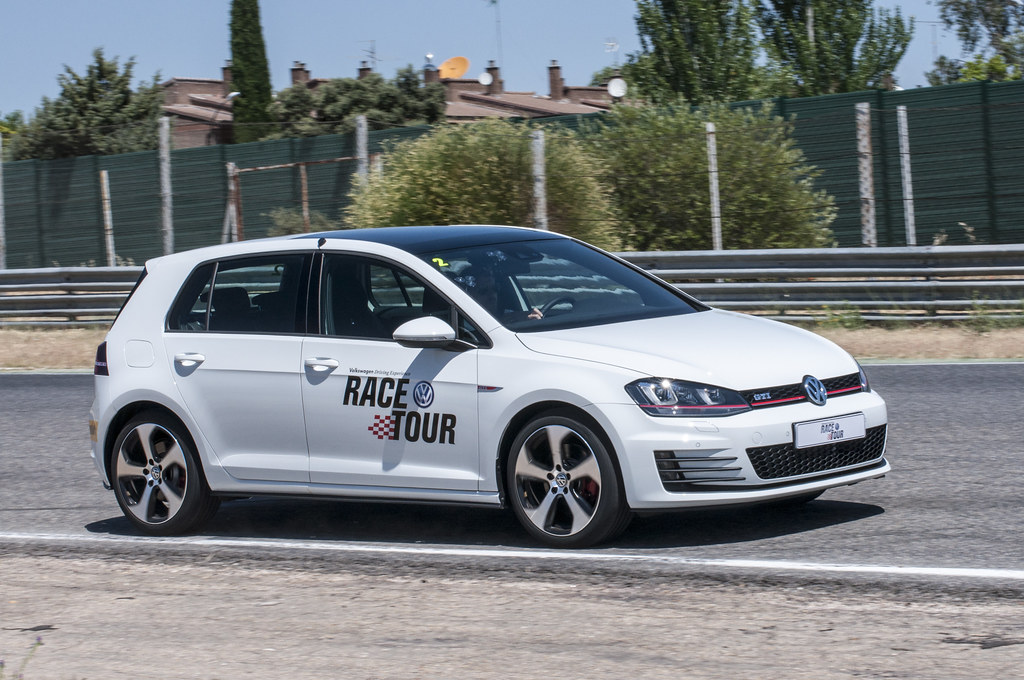
8. **Volkswagen Golf GTI**
Rounding out our specific vehicle recommendations, the Volkswagen Golf GTI presents an estimated 10-year maintenance cost of $5,866. This figure is particularly noteworthy for a vehicle widely celebrated as a “hot hatch,” offering spirited performance and an engaging driving experience. It demonstrates that performance-oriented models can also be practical and relatively affordable to maintain over the long haul.
Volkswagen’s long-standing commitment to quality control and a focus on robust, well-engineered components are key contributors to the GTI’s manageable maintenance costs. Even within its performance-tuned chassis and powertrain, the brand often prioritizes durability and reliability, aiming to reduce the frequency and severity of potential issues. This engineering foresight helps keep the unexpected repair bills at bay.
Furthermore, as a popular and well-established model, the Golf GTI benefits from widespread familiarity among mechanics and a ready availability of standardized replacement parts. This widespread knowledge base and parts accessibility streamline repair processes, ensuring that maintenance, when needed, is both quicker and more affordable. The Volkswagen Golf GTI thus offers a compelling blend of driving excitement and practical, long-term affordability, making it a unique and smart investment for enthusiasts and everyday drivers alike.
### Broader Factors and Car Features that Contribute to Minimized Maintenance
Beyond specific models, understanding the underlying principles of vehicle affordability can empower consumers to make smarter purchasing decisions. The sticker price is merely the entry fee; the true cost of ownership unfolds over years of driving. Several key factors and vehicle features play a pivotal role in determining your long-term financial outlay.
One of the most significant, yet often overlooked, expenses is depreciation. According to AAA, it is the “most significant cost category associated with ownership” in its 2024 analysis. Brands like Honda and Toyota, renowned for their reliability, tend to have lower depreciation rates because consumers perceive them as dependable, a perception supported by data. Conversely, luxury brands often experience “quite high” depreciation rates due to their elevated initial price tags. Savvy buyers will factor in how well a car retains its value before committing to a purchase.
Another critical financial consideration is car insurance, where rates can fluctuate substantially depending on the chosen vehicle. Greg Brannon of AAA advises that buyers should proactively “call their auto insurance for a quote before making a purchase.” Factors such as a vehicle’s safety systems, its propensity to be involved in accidents, and the expense of repairing it after a collision all influence policy pricing. Opting for a vehicle known for its safety and economical repair costs can lead to significant savings on premiums.
Fuel costs also represent a substantial ongoing expense that can dramatically affect a vehicle’s overall affordability. AAA data indicates that “hybrids have some of the lowest ownership costs,” primarily due to their superior fuel efficiency. For consumers looking to reduce their running costs, prioritizing fuel-efficient models, particularly hybrids, can lead to considerable savings at the pump over the vehicle’s lifespan.
When evaluating potential purchases, a few core features consistently contribute to lower long-term maintenance costs. Firstly, “unobstructed access under the hood” is invaluable. If a vehicle’s components are difficult to reach, mechanics often require more time, which directly increases labor costs. Ample room and logical layout in the engine bay can make routine services and repairs much more efficient and less expensive.
Secondly, the complexity of a vehicle’s technology has a direct correlation with repair costs. Generally, “the simpler the technology, the quicker and easier a car can be to repair.” Newer cars, laden with intricate electronic systems and advanced components, tend to be more complicated to diagnose and fix, often resulting in higher maintenance bills. Opting for models that balance modern features with proven, less complex engineering can be a strategic move.
Finally, the availability and standardization of replacement parts are crucial. Cars that use “common, standardized replacement parts” often benefit from cheaper and faster repairs. This is because parts are readily available from numerous suppliers, fostering competition and reducing prices. Vehicles with proprietary or specialized components, particularly from niche or high-end brands, can face longer wait times and significantly higher costs for parts.
### The Bottom Line: Driving Smarter in 2025
Car Model Information: 2019 Land Rover Range Rover Sport HSE
Name: Volkswagen Golf
Caption: Volkswagen Golf Mk8
Manufacturer: Volkswagen
Production: 1974–present
Class: Compact car
Predecessor: Volkswagen Beetle
Successor: Volkswagen ID.3
Alt: grey car (hatchback)
Categories: 1980s cars, 1990s cars, 2000s cars, 2010s cars, 2020s cars
Summary: The Volkswagen Golf () is a compact car/small family car (C-segment) produced by the German automotive manufacturer Volkswagen since 1974, marketed worldwide across eight generations, in various body configurations and under various nameplates – including as the Volkswagen Rabbit in the United States and Canada (Mk1 and Mk5), and as the Volkswagen Caribe in Mexico (Mk1).
The original Golf Mk1 was a front-engined, front-wheel drive replacement for the air-cooled, rear-engined, rear-wheel drive Volkswagen Beetle. Historically, the Golf is Volkswagen’s best-selling model and is among the world’s top three best-selling models, with more than 35 million units sold as of 2019.
Initially, most Golfs were hatchbacks, with the three-door version being somewhat more popular than the five-door. Other variants include an estate (Variant, from 1993), convertible (Cabriolet or Cabrio, from 1979), and a Golf-based saloon called the Jetta, Vento (from 1992), or Bora (from 1999). The Golf covers economy to high-performance market segments.
The Golf has won awards, including the World Car of the Year in 2009, with the Mk6 and in 2013 with the Mk7. Along with the Renault Clio and the Vauxhall Astra, the Golf is one of only three cars to have won European Car of the Year twice, in 1992 and 2013. The Golf has made the annual Car and Driver 10Best list multiple times. The Mk7 won the Motor Trend Car of the Year award in 2015, and the Mk1 GTI also won the award in 1985. The Mk4 won for the best-selling car in Europe in 2001.
Get more information about: Volkswagen Golf
Buying a high-performing used car >>>
Brand: Volkswagen Model: Golf GTI
Price: $27,489 Mileage: 77,935 mi.
Read more about: Optimizing Urban Journeys: A Comprehensive Guide to Compact Cars for Commuters Over 60
Choosing a vehicle with minimal repair and maintenance costs is one of the most impactful decisions you can make to safeguard your financial well-being in the long run. The models highlighted—from the robust Toyota Corolla Hatchback to the spirited Volkswagen Golf GTI—offer compelling proof that affordability does not have to come at the expense of reliability or even driving enjoyment. By carefully considering not just the sticker price, but also depreciation, insurance premiums, fuel efficiency, and critical design features like accessibility and parts commonality, you can make a truly informed choice. Empower yourself with knowledge, and your next car will be a source of consistent value, not unexpected financial strain, for years to come.

.jpg)
.jpg)
